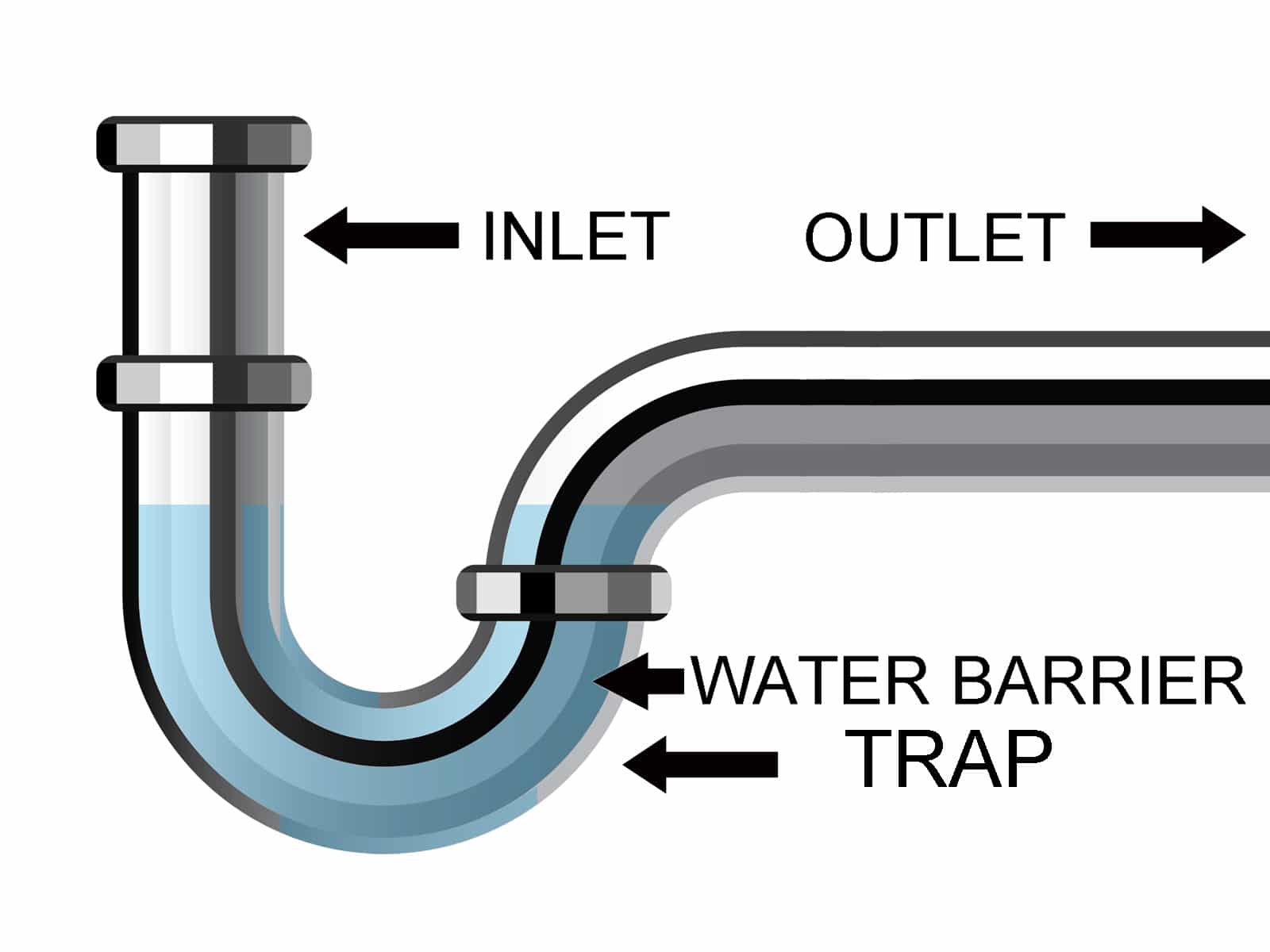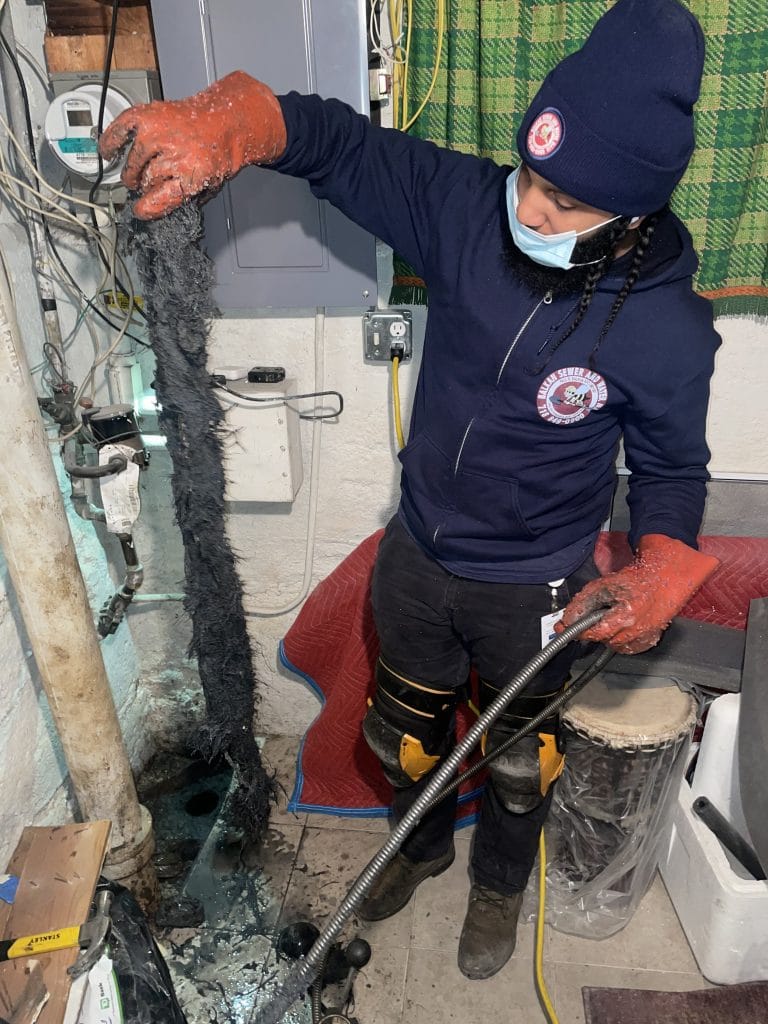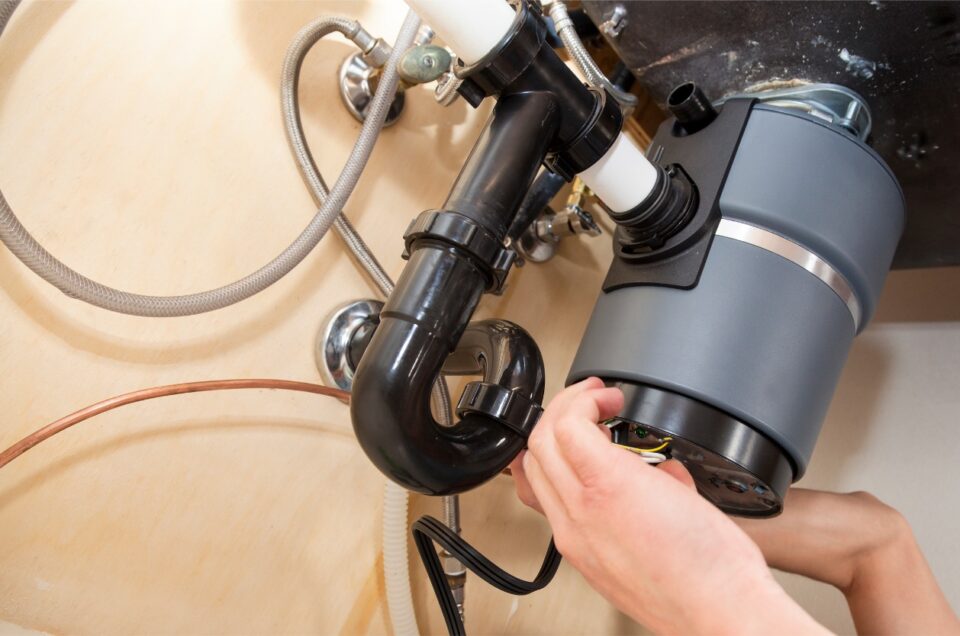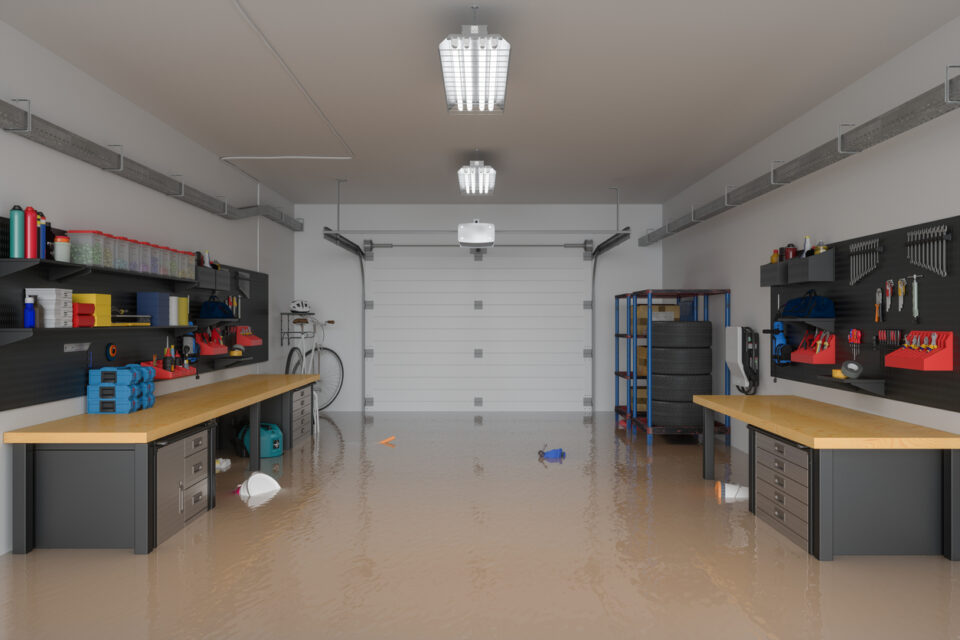A shower drain trap is a necessary plumbing fitting to prevent drain clogs inside a shower stall. In plumbing terminology, the term “shower trap” refers to a bent pipe installed between the initial horizontal drain line and the secondary horizontal line. The quick answer to “Does a shower drain need a trap?” is absolutely yes.
Every Plumbing Fixture In Your House Requires A Trap
Every water fixture in your house is directly connected to a secondary drain pipe. However, before wastewater enters the main drain line, it must travel through the trap. In certain water fixtures, such as a kitchen sink, the trap sits just after a garbage disposal. This trap bends downward to resemble the letter “U” or “P” when inspected from a right angle, hence the term P-trap.
A trap has 3 components
Proper plumbing installation calls for every water fixture, including a shower, to be trapped. Just like any P-trap installed in other fixtures a shower trap prevents sewage gas, or any foul smell, in the main drain from entering the shower room. Sewer gas tends to rise, so eventually it can reach other areas inside the house.
In its basic form, a shower trap is comprised of three parts:
- Inlet (vertical) pipe through which wastewater from the shower drain enters the trap.
- The downward-bent pipe; it always contains water that acts as an airtight seal. Stagnant water in the pipe is displaced with wastewater coming out from the inlet pipe.
- Outlet (horizontal) pipe that directs wastewater towards a house stack, then the main house drain. Eventually, to a public sewer treatment plant or septic system.
Without a shower drain trap, gases along with contaminants from sewer facilities will enter the inlet pipe and the house, causing odors and serious health risks. In addition, a 2 inch shower trap (2″inch the typical requirement for a shower) prevents unsuitable objects from entering your drain system.
It is much easier to clear an object from out of a trap than fetching it from out of the inside of a drain line. Unlike in other drain components, slip joints can be used to connect the 3 components of a P trap.
Typical Location of a Shower Trap
A shower trap is ideally installed within a close distance to the shower drain at the base of the shower stall itself. Depending on the house design, the wet room (shower stall) can be located on any floor of a house, even the basement. In a multi-family building, where there can be more than a dozen shower rooms in one building that channel wastewater to a single main drain, there must be a P-trap connected to each and every one of the showers.
Traps should be installed within close proximity to the drain outlet
Installing a shower drain trap too far from a shower drain can still cause odor issues due to the accumulation of dirt and debris inside a secondary drain line. The longer it takes to reach a P-trap, the risk for odor also becomes greater. That is why plumbing codes dictate the maximum distance permissible for a trap to be located from a plumbing fixture.
A main house drain is always in the lowest section of the building to accept wastewater from all fixtures. You can consider this as if it is the trunk of a tree, and the secondary drain pipes act as branches.
A shower trap can be very hard to reach, and inaccessible. For instance, a trap on an upper floor may require removing ceiling panels from a lower floor for access. Accessing a trap in a basement may require disassembling the shower stall itself. Therefore, careful maintenance and not being abusive to a drain system can save a lot of aggravation and disturbance.
The best location for a shower trap
The best location for a shower trap is therefore directly under the shower drain cover itself. Every wet room (shower stall) has a drain cover installed on the lowest/sloping position of the shower floor. Such a design allows water to flow through the drain cover by the force of gravity.
Some drain covers offer another “trap” or filter that strains non-water-soluble objects from wastewater such as hair and soap scum. While it is not 100% reliable, at least the filter gives protection against frequent clogging in the P-trap. As long as you do your due diligence and clean the drain cover/trap regularly, chances are you don’t have to fix a blocked shower drain often.
How to Clean a Shower Drain Trap
A P-trap has been around for more than a hundred years. It was a brilliant idea back then, and today it is still an indispensable part of plumbing installations. Also, not much has changed since the first P-trap was invented.
As mentioned earlier, a typical drain fixture trap consists of three different parts. It is not an integral component of a drainage system, so it is easy to disassemble and reassemble without affecting wastewater management in your home.
You can take the bent pipe (the belly of the trap) apart, leaving both the main and secondary drain pipes unmodified. In case your shower trap is clogged for any reason, it is easy to fix the problem without using any specialty plumbing equipment.
All you need are screwdrivers, pliers, a bucket, a towel, and a large bottle brush. For a more thorough cleaning, you can also use a plumbing snake. Follow this step-by-step instruction to do the repair job.
The 5 Steps to follow to clean a P Trap
1. Locate the P-trap installed beneath the shower drain cover. This bent pipe should be uncovered and easily accessible. In a second-story situation, a shower trap may be covered by an access door secured with screws; unscrew the door to gain access.
2. Before you try to remove a P-trap from the drain system, put a bucket directly under it to prevent spillage resulting in a messy floor, and dirty work area.
3. Find the slip joint nuts that attach the trap to the drain tailpiece and main drain line. If the tail joints are made of metal, you may need to use adjustable pliers to unscrew the connection.
4. A shower trap should be easily removed now. Use the large nylon brush to clean the inside surface. Do not forget to operate the plumbing snake to clean both main and secondary drain lines.
5. Reassemble everything back. Tighten all the screws by hand first, and continue tightening them even more with the pliers.
Sometimes the drain tailpiece, P-trap, and main drain lines are glued together, especially when they are made of PVC. You need to cut the shower trap using a hacksaw. Replace the trap afterward. Also, remember that a trap holds water at all times, therefore it can be fragile and worn. Always take a gentle approach.
Preventing Shower Trap Clogs
First and foremost, remember to always have the shower drain cover in place. The most serious blockage occurs if a foreign object enters your drain line system, or physically gets lodged inside the trap. Installing a drain cover that has a strainer on it is the first defense against shower trap clogging. Remember that this filter is not always reliable, meaning you still need to do regular maintenance to make sure the drain operates properly.
Respect Your Drains!
Be attentive to what you pour down the shower drain; anything that is not water-soluble should be thrown away in the trash, not into the shower drain. Every other week, use a homemade cleaning solution to get rid of dirt and debris from the drain line. Use a mixture of hot water and vinegar (1:1 ratio), and pour it down the drain.
Vinegar is a mild acid that will scrape off dirt and debris on the inside surface of the shower trap pipe. If you don’t like the smell of vinegar, pour a glass of lemon juice into the drain as well. Lemon is also acidic, but it does not smell as strong as vinegar does.
When a Professional Local Drain Cleaner is Needed
Of course, there are times when you’ll need a professional drain cleaning service and all the specialty tools and equipment that come along with such a service. This is even true for the most diehard DIY enthusiast. If you are looking for the best sewer cleaner in NYC, after over 70 years and 90,000 satisfied customers, the Balkan Drain Team is The Team To Trust.



